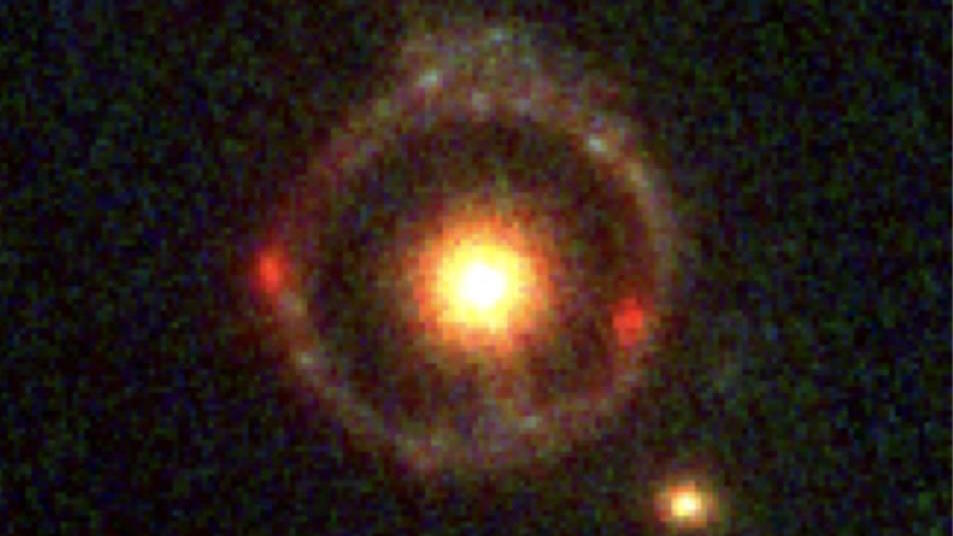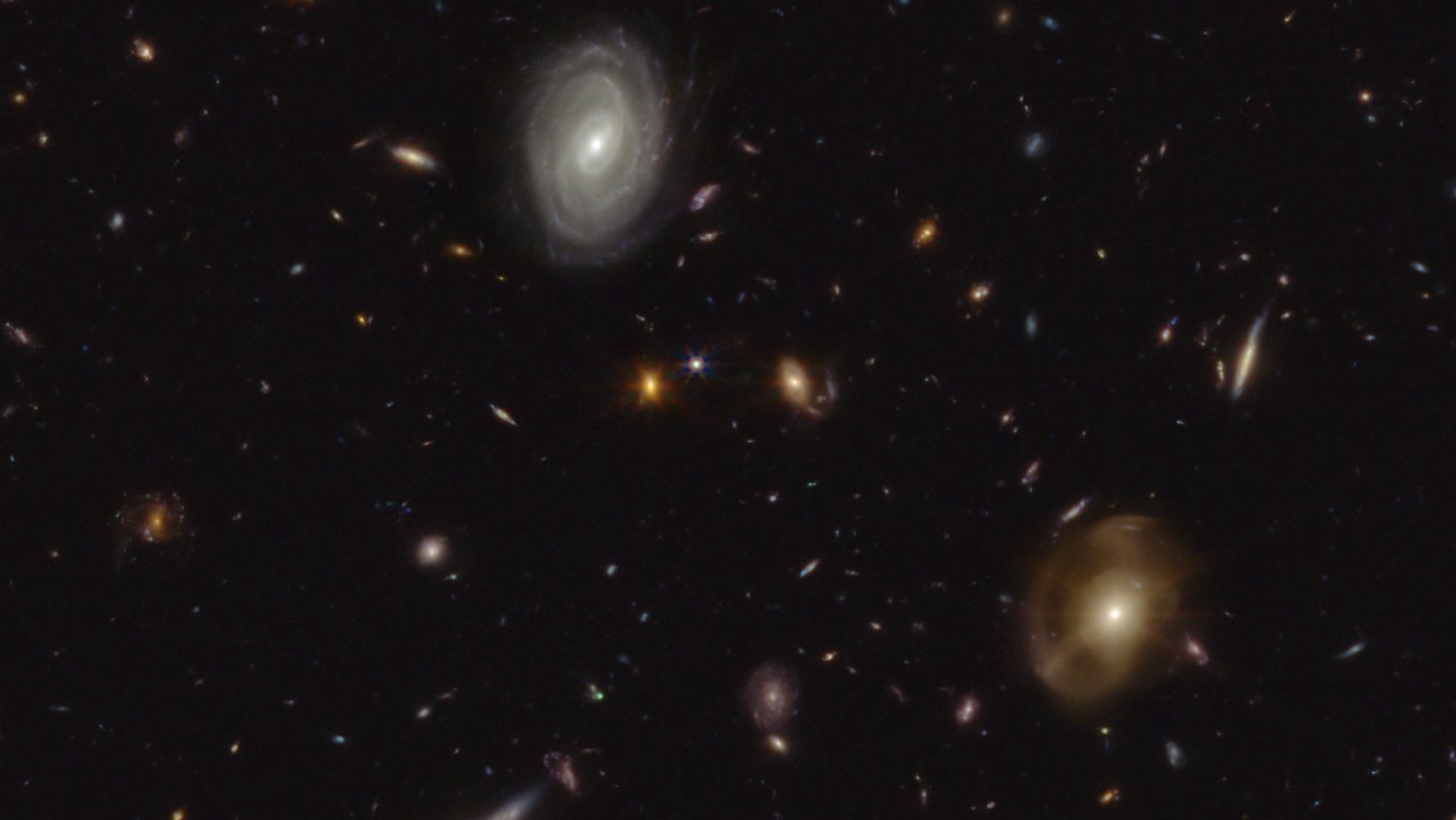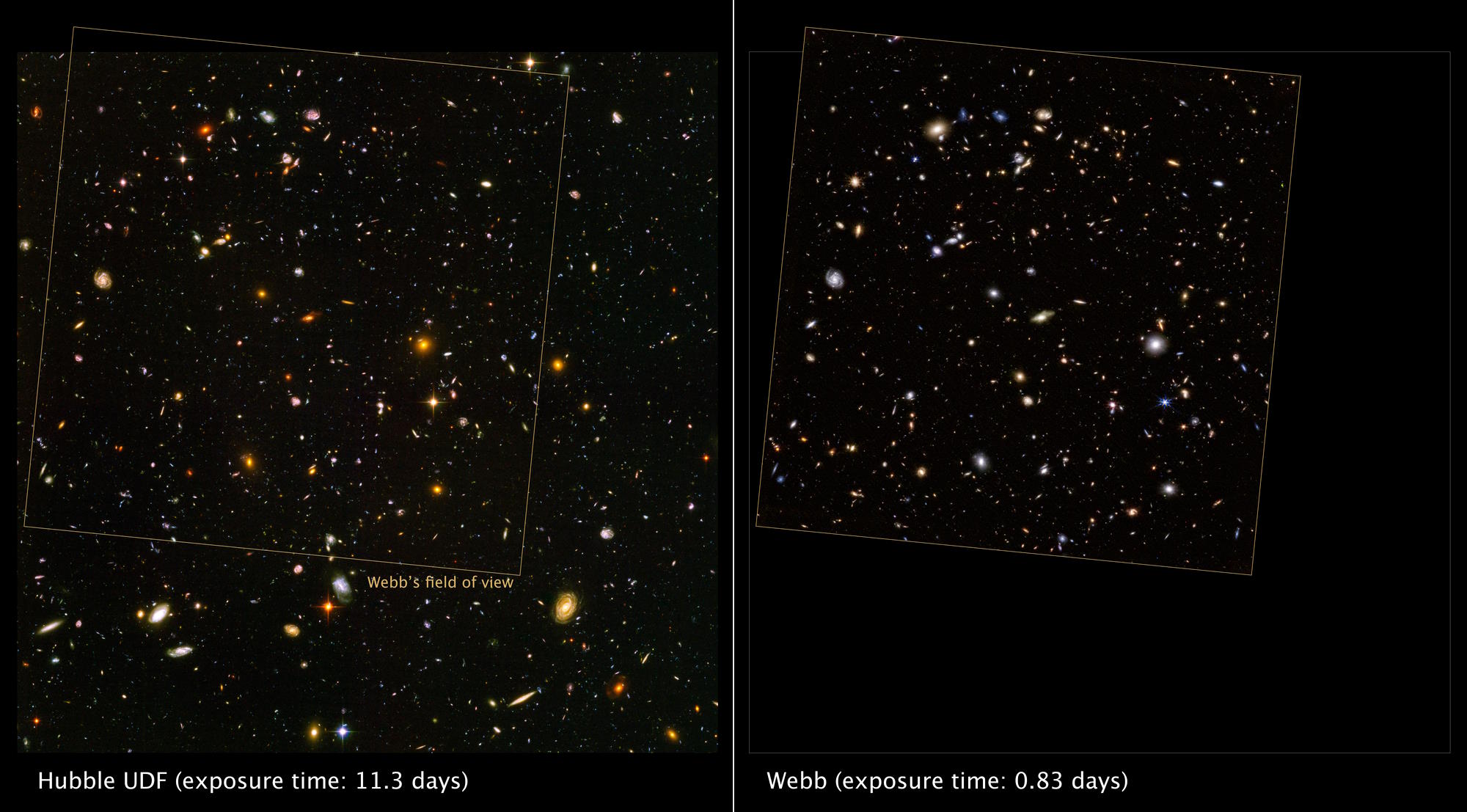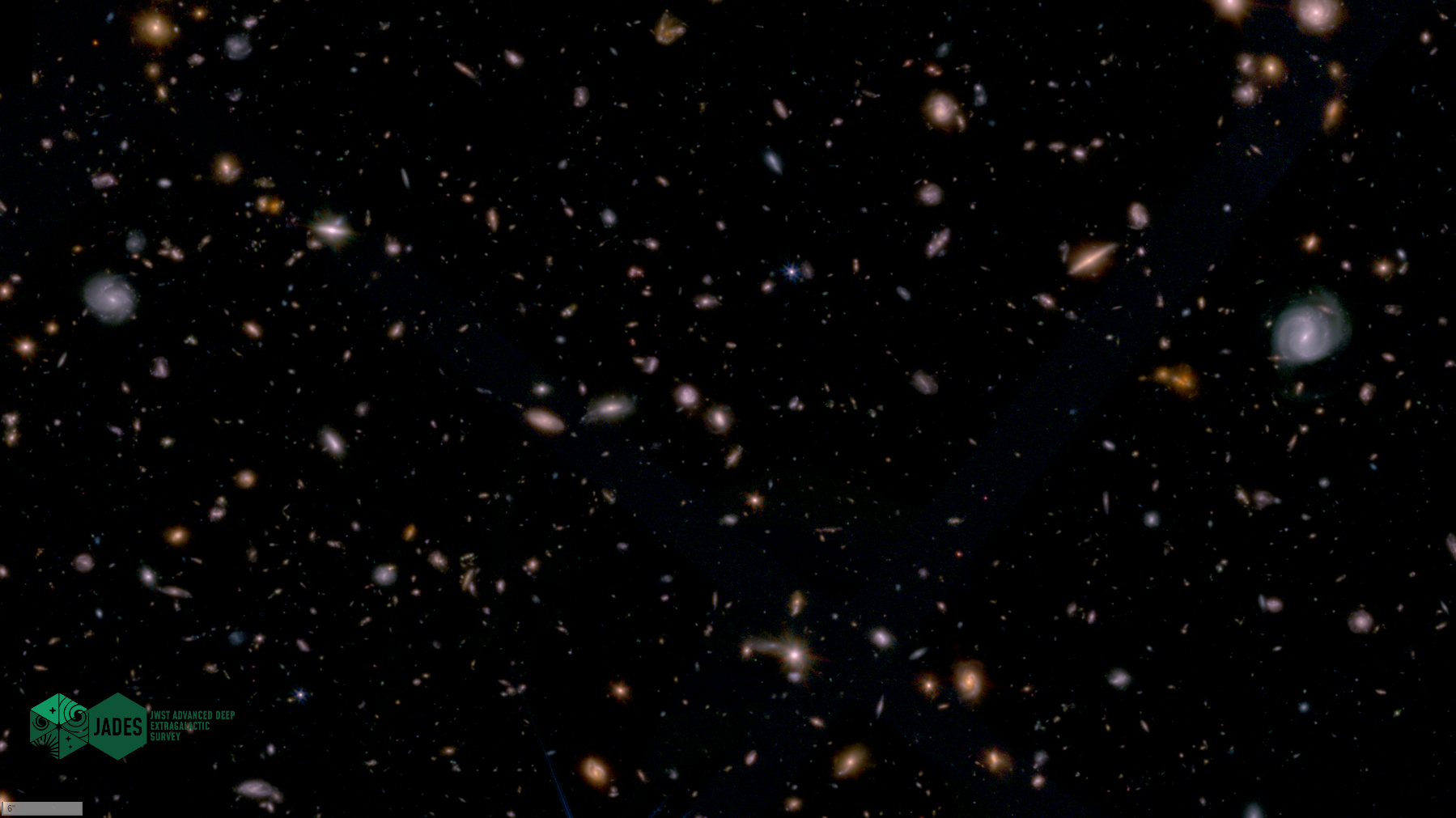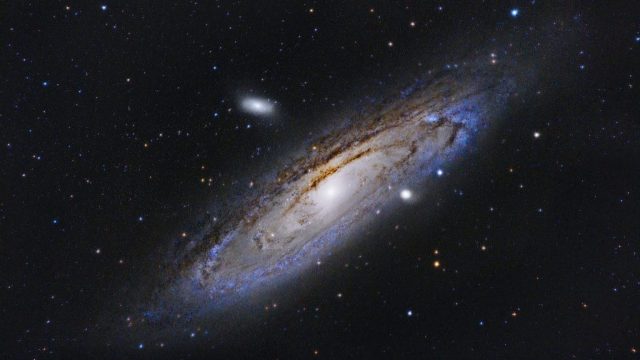The top 15 JWST images of 2023
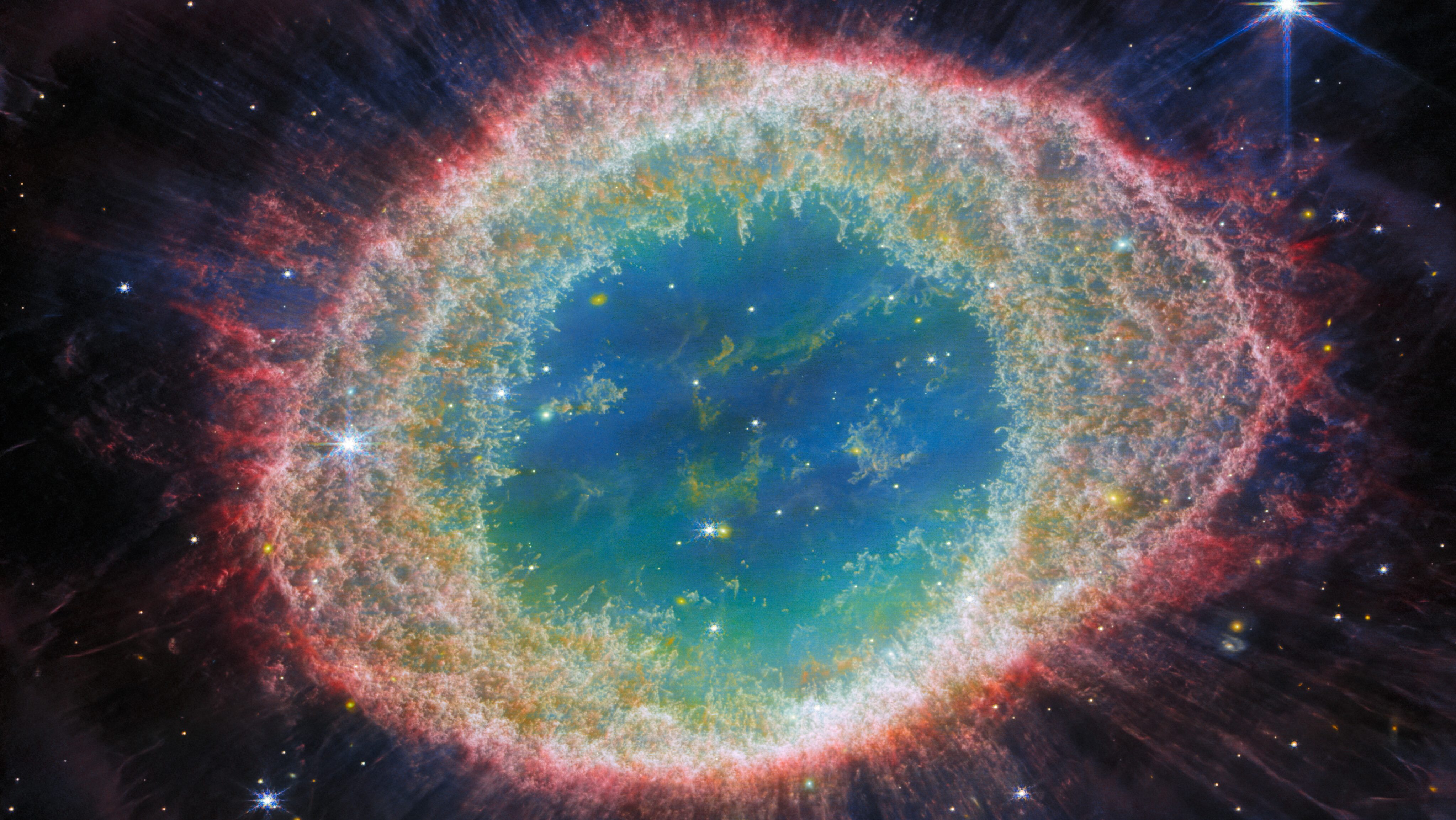
- 2023 marked the very first full year of science operations for JWST, which only began taking science data halfway through 2022.
- With hundreds of image releases and thousands of scientific papers that have already come from humanity’s latest flagship astrophysics observatory, the scientific value is beyond reproach.
- Here are some of the greatest images of the past year acquired with JWST, with some of the mind-blowing science behind what it’s been seeing.
Although it might seem that the world changed long ago from the Hubble era to the JWST era, the reality is that humanity’s greatest space-based observatory of all-time is less than two years old. It launched on Christmas Day, 2021, and required six months of deployment, commissioning, and calibration operations before it was ready to begin the primary phase of its life: full-time science operations. Since those milestones were achieved in July of 2022, JWST has been our cosmic workhorse, revealing the Universe in a whole new light, with unprecedented resolution and wavelength coverage to view the cosmos.
While its first sets of spectacular images were released during 2022, this past year, 2023, represents the very first year that we had this remarkable observatory operating full-time, surveying the Universe near and far to reveal some of the most incredible views, plus many unexpected scientific discoveries, that pretty much no one could have anticipated. Here, without further ado, are my favorite JWST science images released in 2023.
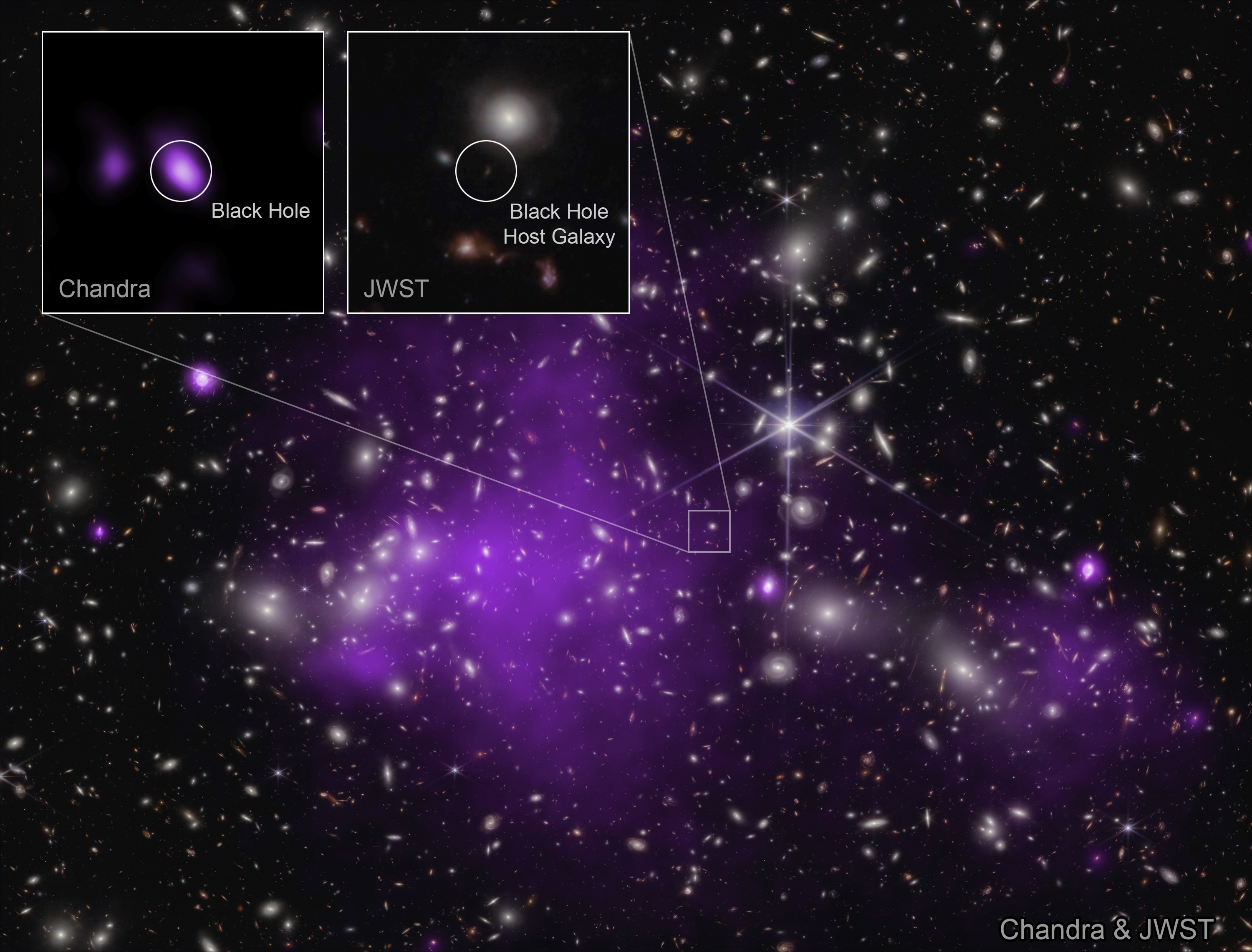
1.) Our most distant black hole ever. It was only last month, while combining Chandra X-ray data with JWST’s deep, infrared views of galaxy cluster Abell 2744, that scientists revealed a tiny, distant, early galaxy with only around 10-to-100 million solar masses worth of material in it, but that was incredibly X-ray luminous, indicating an active black hole of around 9 million solar masses. Not only is this the most distant black hole ever discovered, it’s also our first example of such an extreme mass ratio, where the central black hole is right around as massive as all the stars in the host galaxy combined. Our understanding of black hole-galaxy formation and coevolution will never be the same.
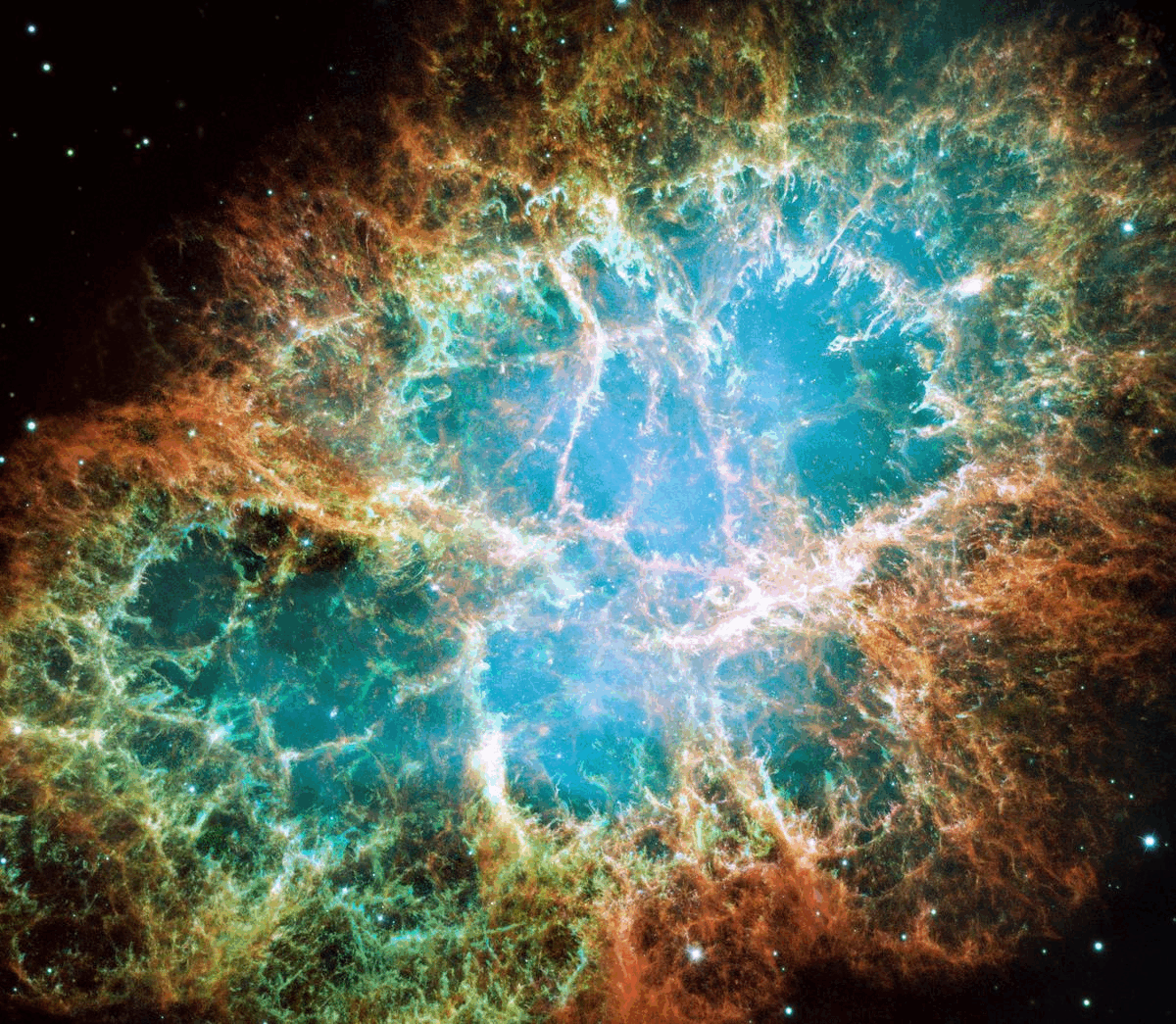
2.) JWST’s view of the Crab Nebula. In the year 1054, a supernova went off in the Milky Way galaxy: so brilliant and enduring it was visible from Earth for a long period of time. Now, nearly 1000 years later, we can look in that same region of sky and find the Crab Nebula: a supernova remnant more than 10 light-years across, with a young, energetic, spinning neutron star at its core, the Crab Pulsar. Whereas Hubble’s visible light views highlight various elements and knots of gas that reflect light, JWST’s infrared views showcase the presence of dust, accelerated electrons, and even the carved-out features by the central pulsar’s winds and magnetism. The question of the mass mystery, or of where all the supposedly “missing material” that would have been needed for the progenitor star to explode, may yet find its solution in the still-being-analyzed JWST data.
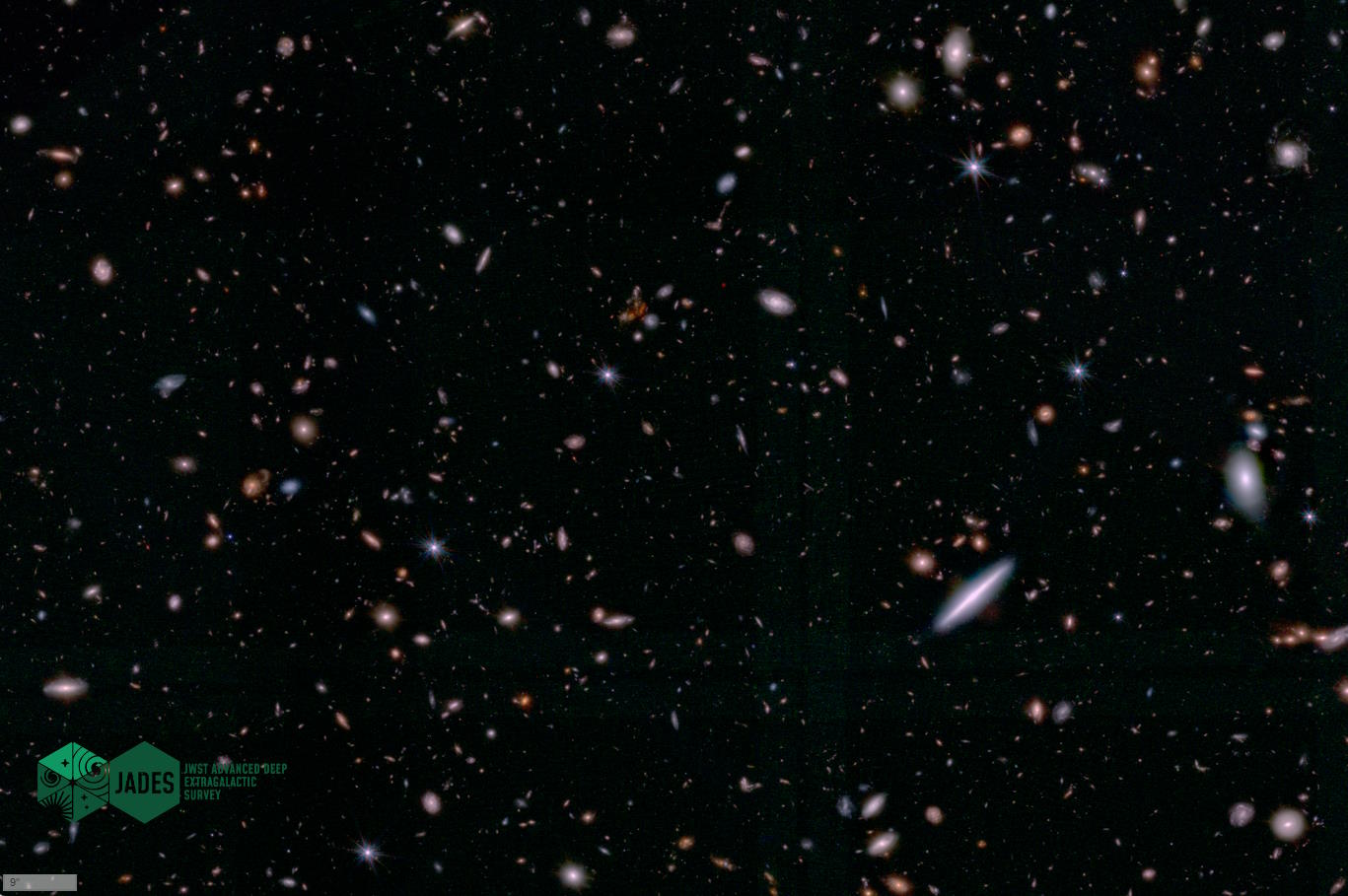
3.) JWST’s deepest-ever view: the JADES view. The JWST Advanced Deep Extragalactic Survey, or JADES, collaboration has released a fully zoomable, explorable view of their field, with various NIRCam filters and NIRSpec spectra capable of being overlaid atop an enormous set of the objects imaged. Although this represents a relatively narrow field-of-view in the sky, it contains the most distant galaxy ever discovered so far, as well as a slew of candidate objects that may yet prove to be even farther away. It showcases the incredible reach and variety of what’s possible with JWST.
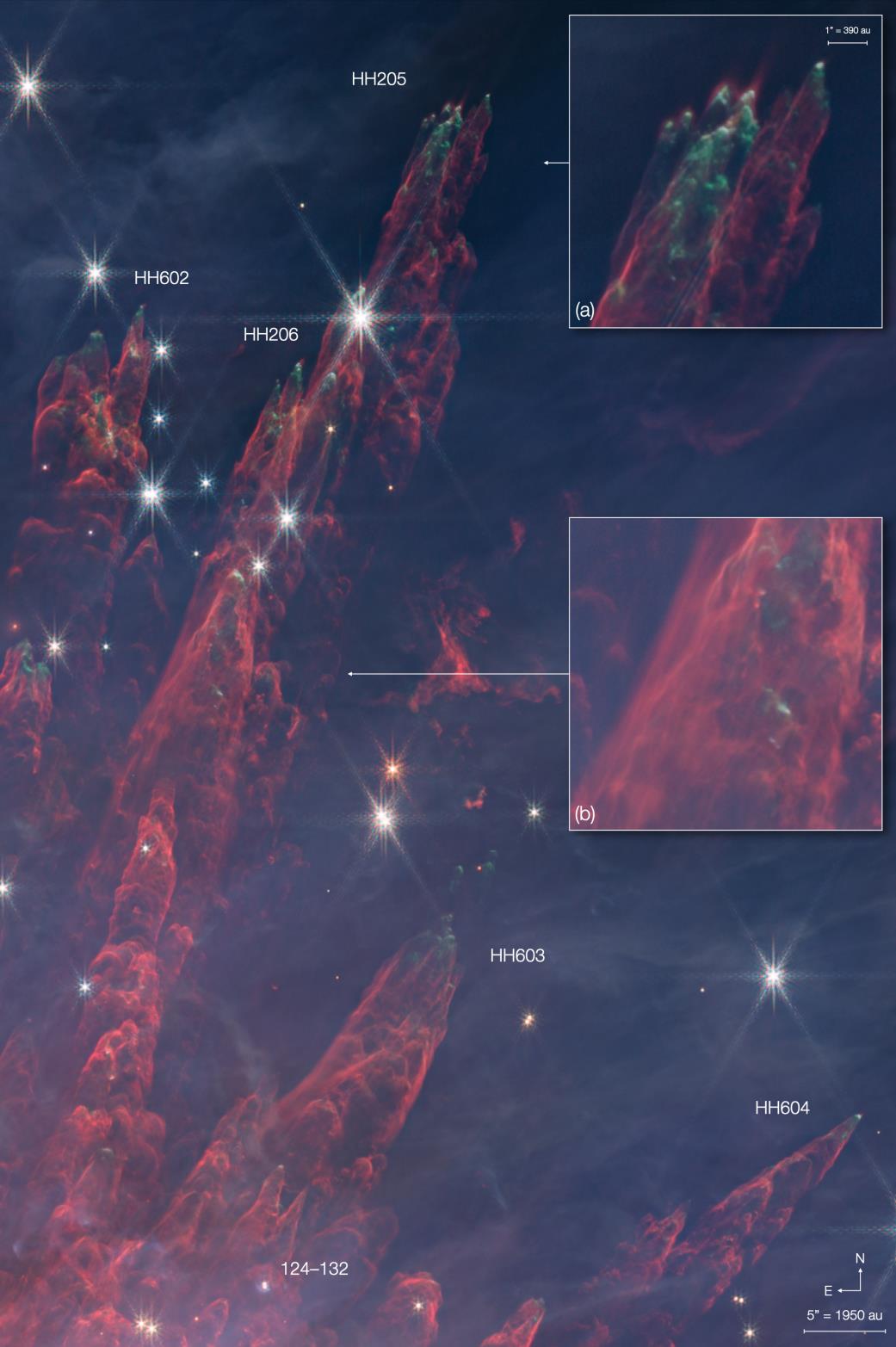
4.) JWST peers inside the Orion Nebula. When you look inside the nearest large star-forming region to us in the Milky Way, the Orion Nebula, what are you going to find? Under JWST’s eyes, there are an enormous number of brilliant, glittering new stars still in the process of forming. Some of them, shown here, are Herbig-Haro objects: massive young stars that are highlighted by stellar outflows. In other cases, there are proto-stars, still in the process of formation, young singlet and binary stars that have already finished forming, and nebulous regions that even JWST cannot penetrate. Lastly, there were some surprises: Jupiter-mass objects that are members of no stellar system, including a surprisingly large fraction of them that are binary objects. The images are as beautiful as the science is profound.
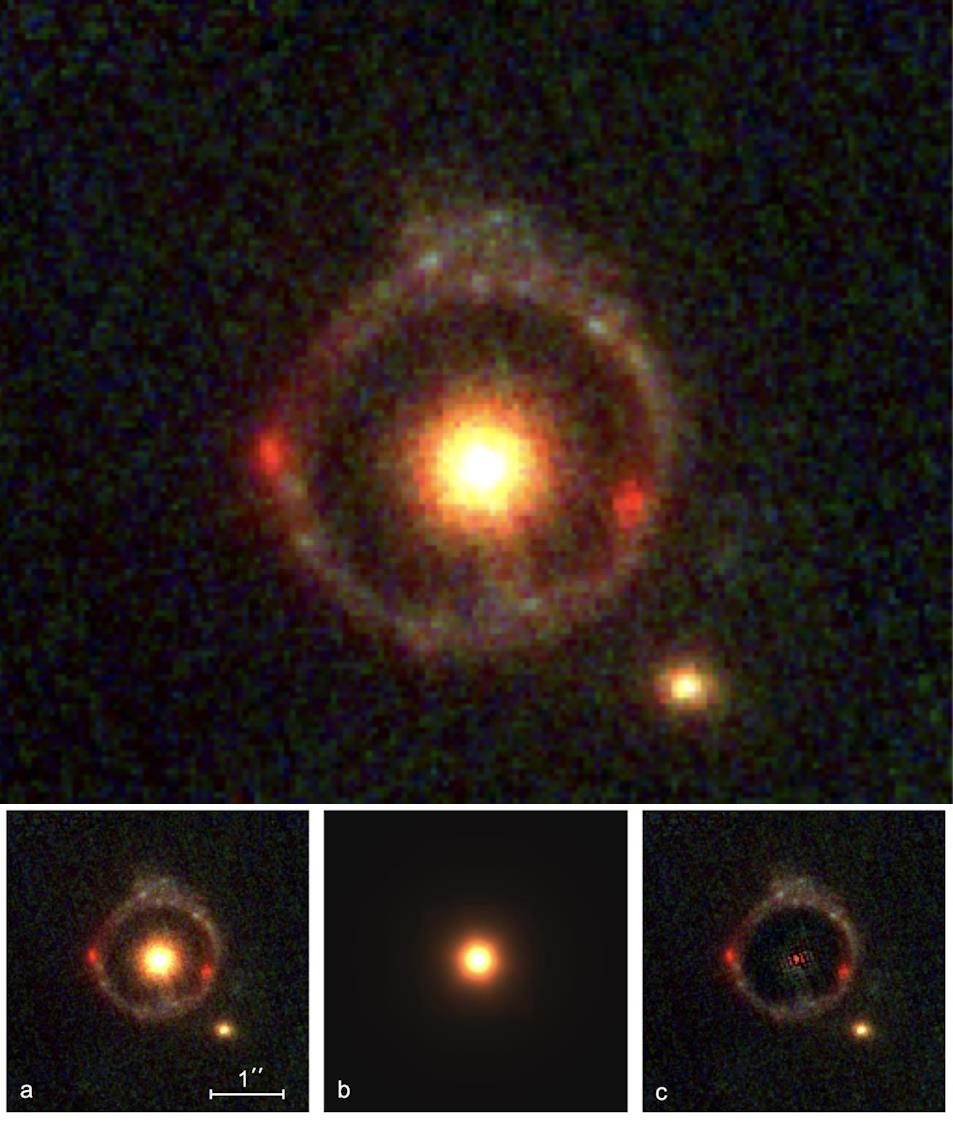
5.) The most distant gravitational lens ever. At the center of this image, a massive compact galaxy is found, located about 17 billion light-years away within this expanding Universe. The ring around it, with two red spots, is actually a single, more distant galaxy that’s located along the same line-of-sight as the closer galaxy, but gravity has distorted it into a ring: an example of gravitational lensing. While more distant background lenses have been spotted, this represents the most distant foreground lens — the object actually doing the lensing — ever discovered.
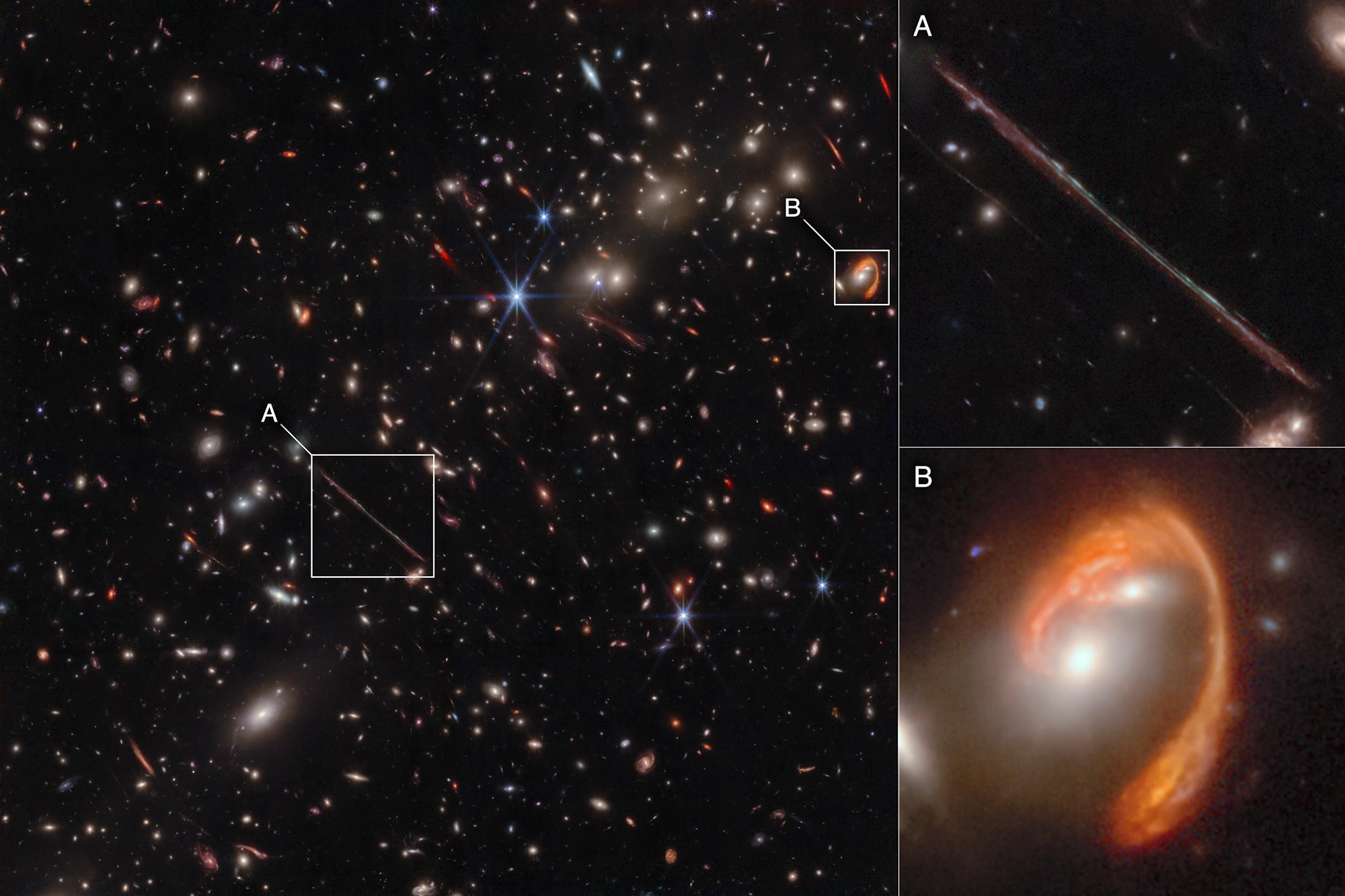
6.) The most massive galaxy cluster for its time. Although galaxy clusters are found all across the Universe, they’re expected to grow larger and larger in mass over cosmic time. For the time at which it was discovered in the Universe, the El Gordo galaxy cluster, imaged here by JWST, is the most massive one known: with over two quadrillion solar masses of material inside it, despite its light coming from more than 5 billion years ago. Within this cluster, marked A and B, are the gravitationally lensed galaxies known as “La Flaca,” which is Spanish for “the skinny one” (a fitting counterpart to El Gordo, or “the fat one”) and the Fishhook. In reality, both of these lensed galaxies are completely normal; their light is stretched into these unusual shapes by the foreground gravity of the galaxy cluster in front of them.

7.) The most distant red supergiant star ever. Located in the same field as El Gordo, and hence in the same field as the Fishhook and the “La Flaca” lensed galaxies, is a single red supergiant star known as Quyllur: the most distant red supergiant ever discovered. Although the previously-discovered star Earendel, also imaged by JWST but discovered first by Hubble, is even farther, this shows that finding individual stars in the early Universe isn’t a one-off proposition, but rather that the combination of JWST’s incredible capabilities plus the enhancement of gravitational lensing can reveal individual stars farther back in cosmic time than via any other method.
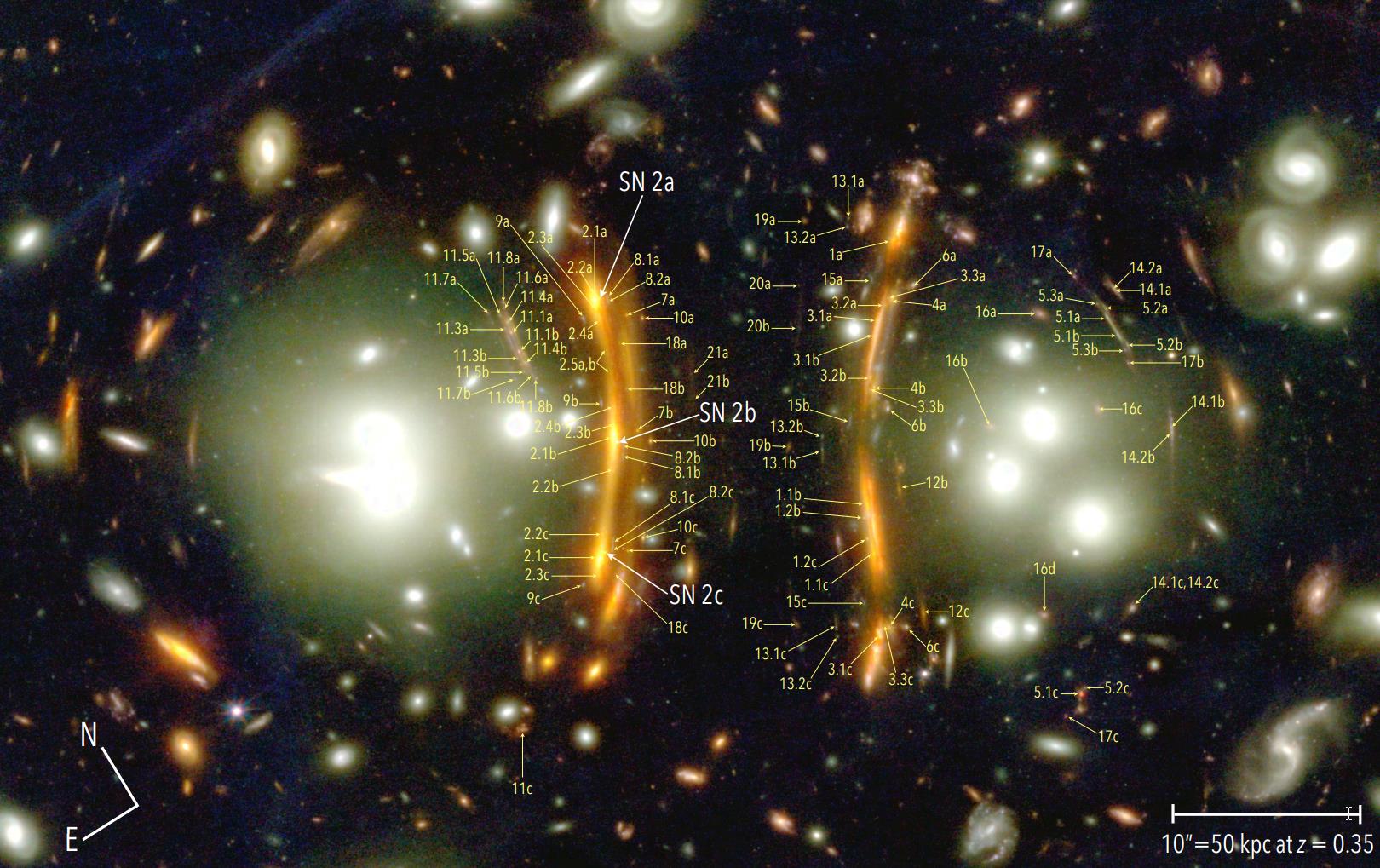
8.) Triply-lensed “Supernova H0pe” discovered. Sometimes, very distant galaxies have their light stretched out into multiple images by the effects of gravitational lensing. When we’re very lucky, a transient event, such as a supernova, will occur in that lensed galaxy, allowing humanity to observe the supernova event on replay in each of the multiple images. The reason this provides such hope, or H0pe in this case, is because the quest to measure the expansion rate of the Universe today, also known as H0 or the Hubble constant, gives two different answers dependent on which set of methods are used.
The discovery of Supernova H0pe provides a potential way to resolve this conundrum over the expanding Universe, and perhaps future observations of multiply lensed supernovae, which JWST should be outstanding at finding, will be just what we need to resolve the so-called “Hubble tension.”
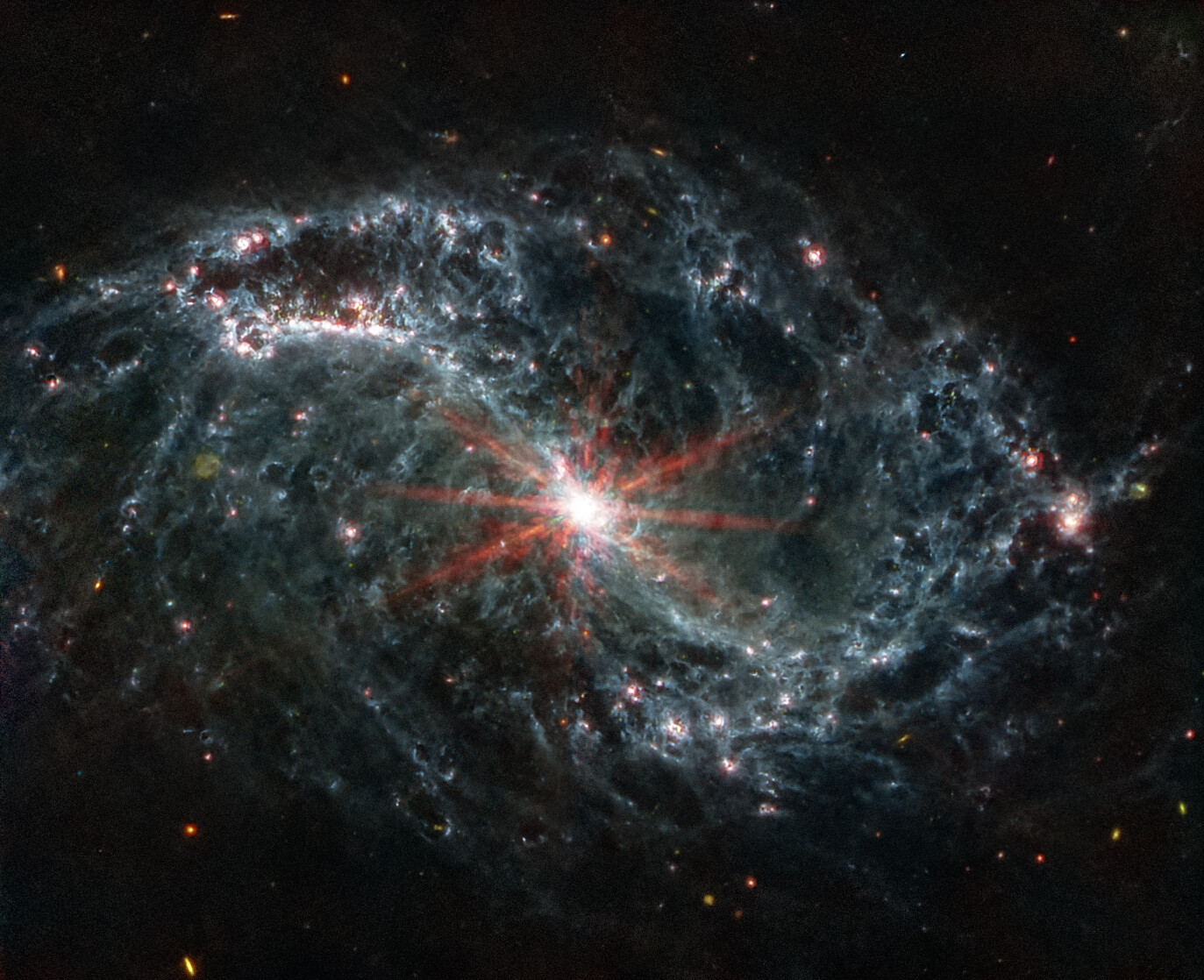
9.) Dusty secrets within spiral galaxies. Most of the images we see of spiral galaxies are taken in visible light, where the stars shine brightly but where neutral matter, particularly dust grains, appear dark, blocking that light. Not so with JWST’s MIRI instrument, which highlights and illuminates the dust inside these galaxies, showing the locations of future and current new star-formation. In this view of galaxy NGC 7496, not only are the dust lanes prominently revealed, along with the pinkish-white regions showcasing regions where new stars are already forming, but the center of the galaxy exhibits brilliant diffraction spikes: evidence for an actively feeding supermassive black hole at the galaxy’s center.
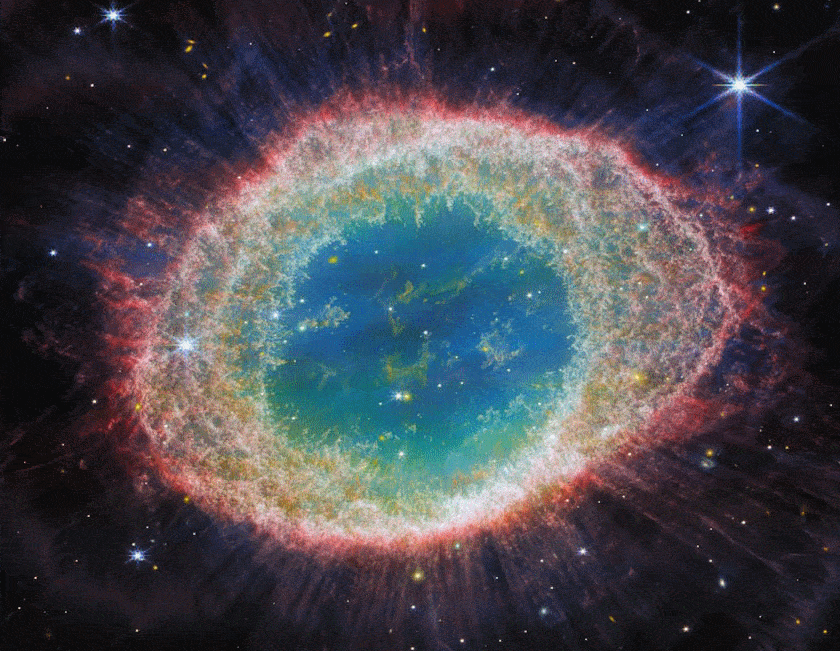
10.) The Ring Nebula. Viewed with both the NIRCam and MIRI instruments independently, this nebula is among the most famous planetary nebulae known: what’s left behind when a dying, Sun-like star blows off its outer layers in its death throes, while its core contracts down to form a white dwarf. You can find, in both views, intricate details of the inner filaments, which are actively being evaporated away by radiation, as well as roughly 10 concentric arcs outside of the main ring feature that are hydrocarbon-rich in the MIRI image. No other observatory has ever revealed this level of detail inside the Ring Nebula.
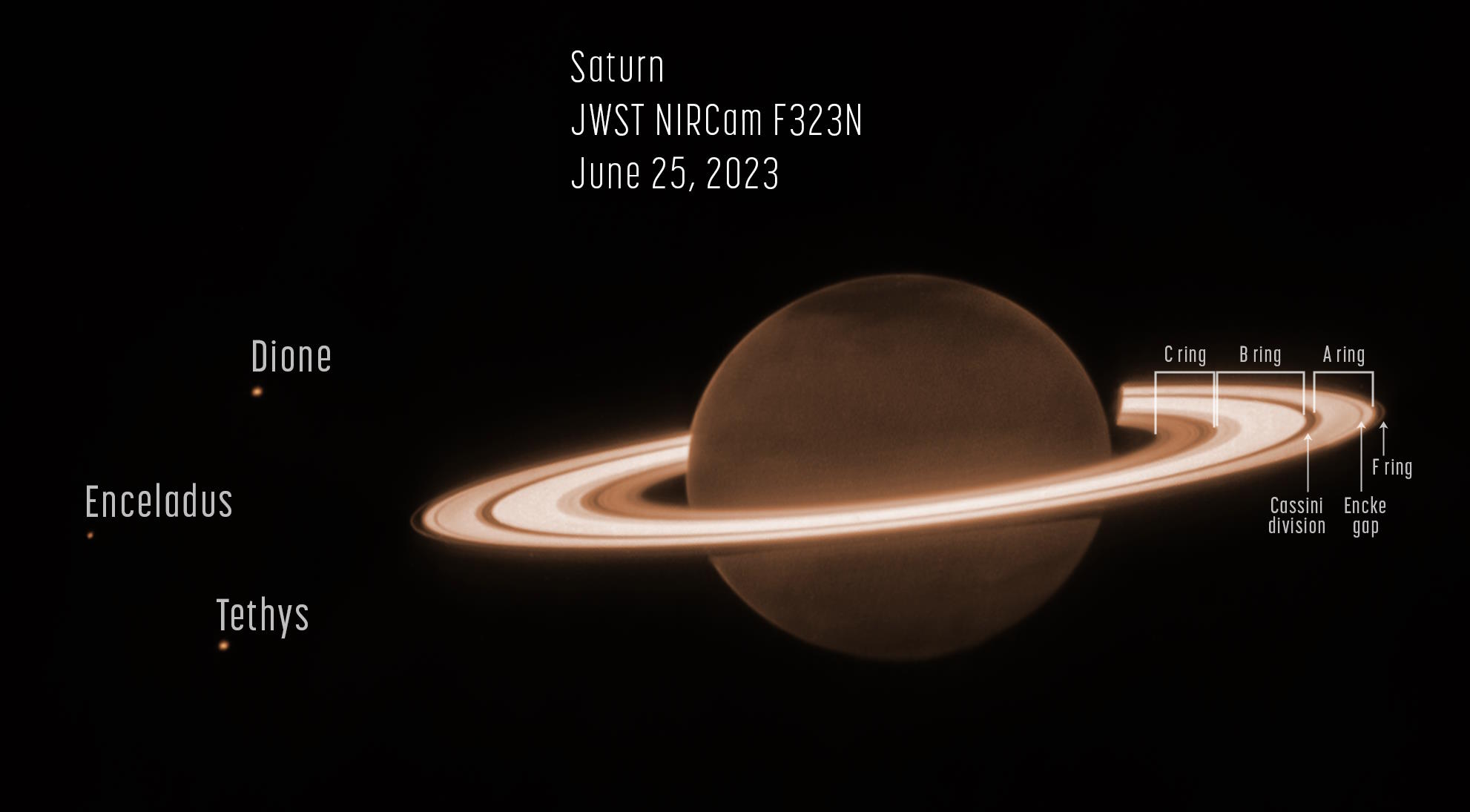
11.) JWST’s stunning view of Saturn’s rings. What shines brighter than Saturn, according to JWST’s eyes? Why, Saturn’s rings of course. Whereas Saturn itself is a relatively cool planet with a cloud-and-haze rich atmosphere separated into bands by latitude, it’s mostly very faint in infrared light. However, its rings are 99.9% composed of water-ice, which is even more reflective in infrared light than in visible light, leading to this unique and stunning view of Saturn’s rings. In this image from JWST, the A, B, C, and F rings are all visible, as are the Cassini division and the Encke gap. Saturn was the final gas giant planet in our Solar System imaged by JWST, completing our Solar System’s family portrait.
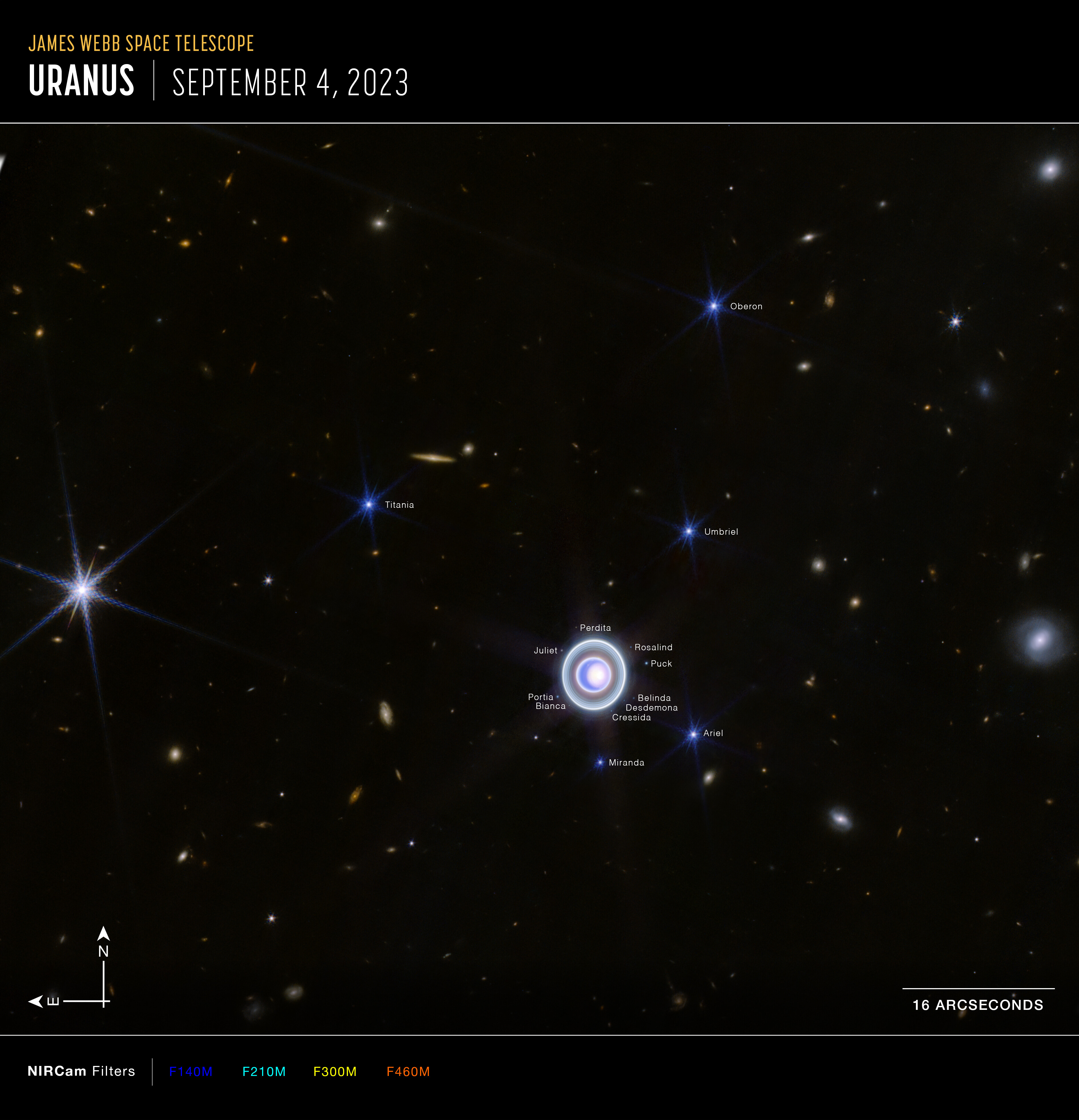
12.) Uranus, new and improved. Although JWST caught its first view of Uranus in February of 2023, the data it acquired on September 4, 2023 shows a far more spectacular view. 9 of its 13 inner moons, plus all five of its main large moons, are all revealed, as are at least five of its rings along with several features on the planet itself: a dense polar cap that fades away toward equatorial latitudes, punctuated by a dark band and with Uranian storms ranging closer to the equator. As Uranus approaches its solstice for the first time since 1986, these JWST views teach us information that no other observatory can reveal.
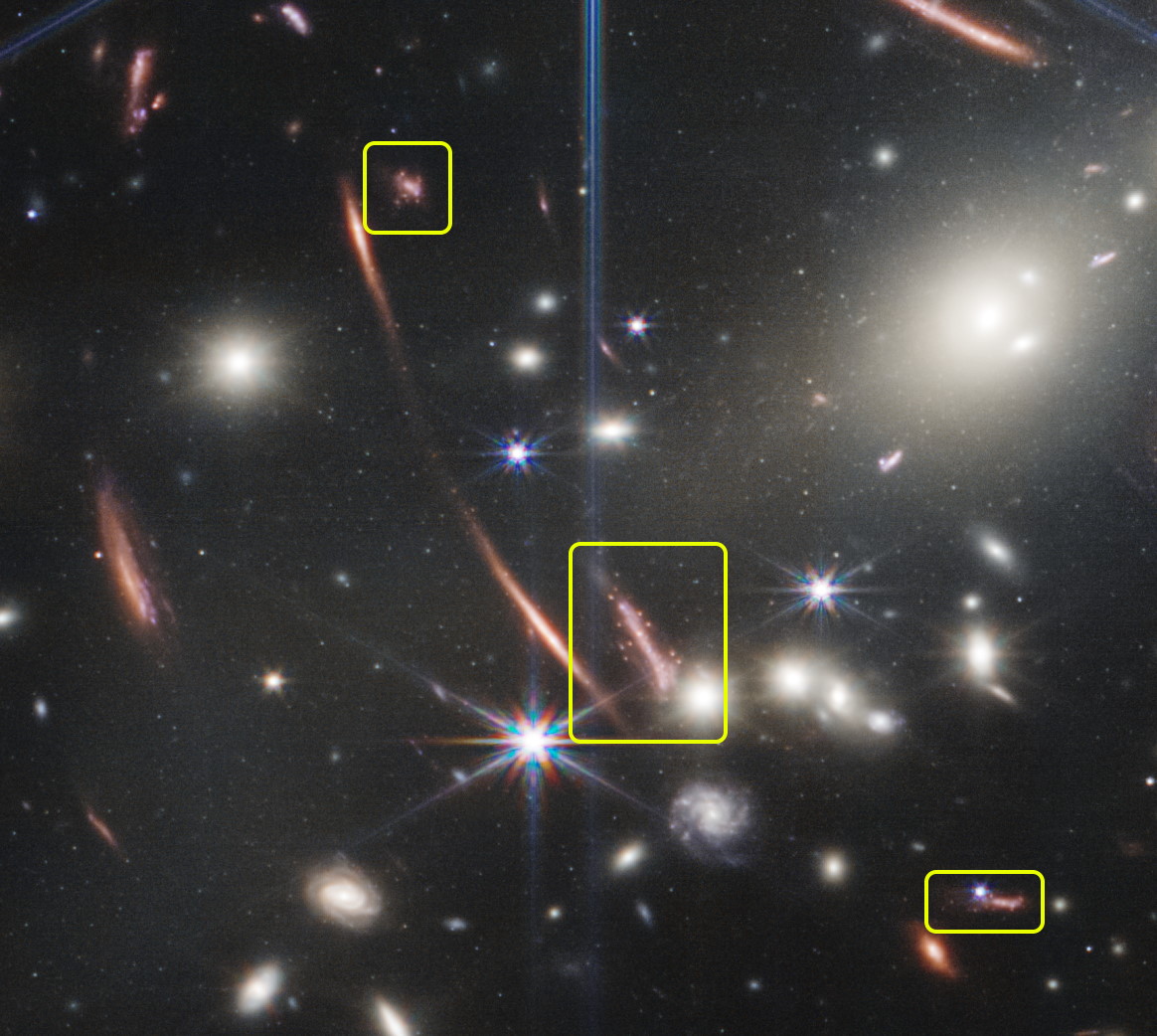
13.) A cosmic sparkler. Although this shows a portion of the very first science image released by JWST, it wasn’t until January of 2023 that this remarkable feature, known as the Sparkler galaxy, was discovered in JWST data. In the yellow boxes, shown above, are three images of the same distant galaxy, lensed, stretched, and magnified by the gravity of foreground cluster, SMACS 0723. The “sparkles” that are most easily visible in the largest, central image are actually globular clusters that are brightly undergoing new episodes of star-formation. When JWST examined these clusters in detail, it found that they already had older populations of stars inside, shedding new light on how “second bursts” of star-formation can occur inside globular clusters: a feature that only a fraction of all known globular clusters possess.
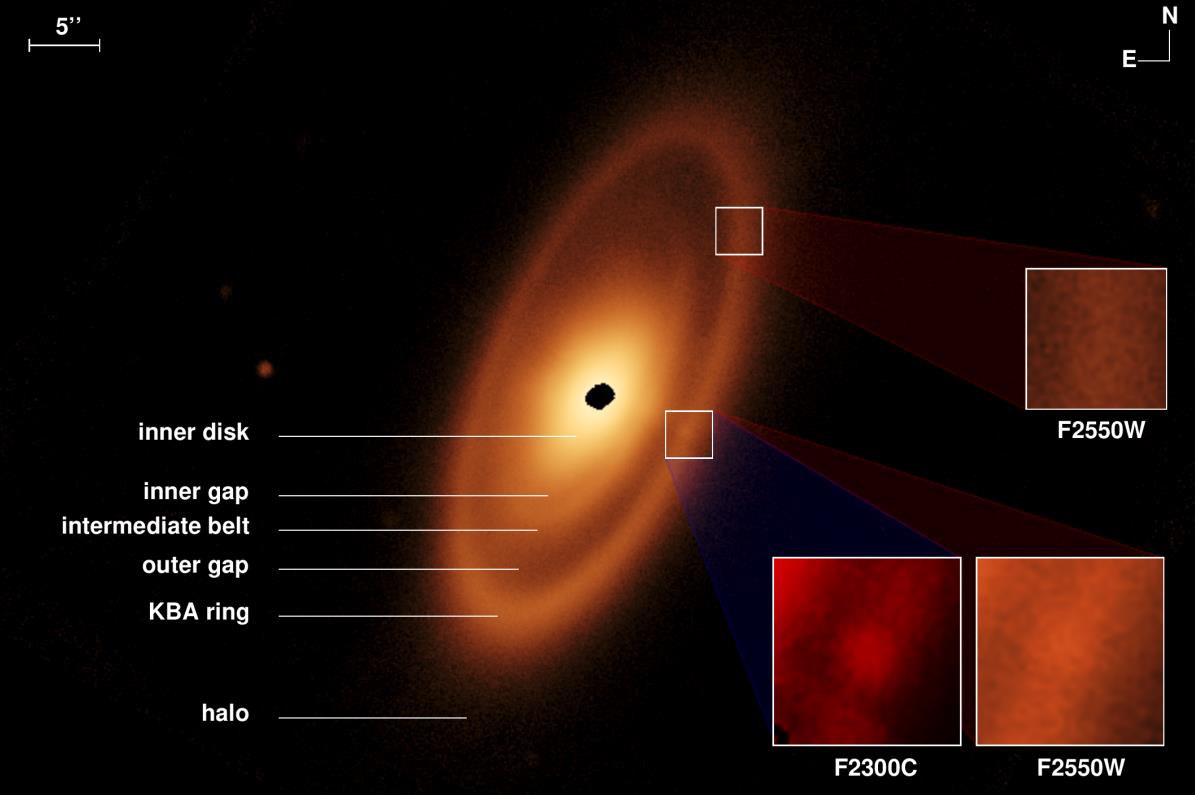
14.) An intermediate belt surprise. We’ve often looked at our Solar System as the prototype for what we expect to find elsewhere in the Universe. While planets can exist both close to and far from a star, we expect there to be a series of frost lines, with the innermost one corresponding to an asteroid belt and the outermost one corresponding to a Kuiper belt. Yet, when JWST examined the young stellar system Fomalhaut, it found something our Solar System doesn’t possess: an intermediate belt, found exterior to the inner disk where the asteroid belt should be, but interior to the Kuiper belt analogue. Is this feature typical of stellar systems, meaning we’re the outlier, or is it unusual, meaning it’s the outlier? More data is needed, but this is a puzzle we didn’t even know would need to be solved prior to 2023.
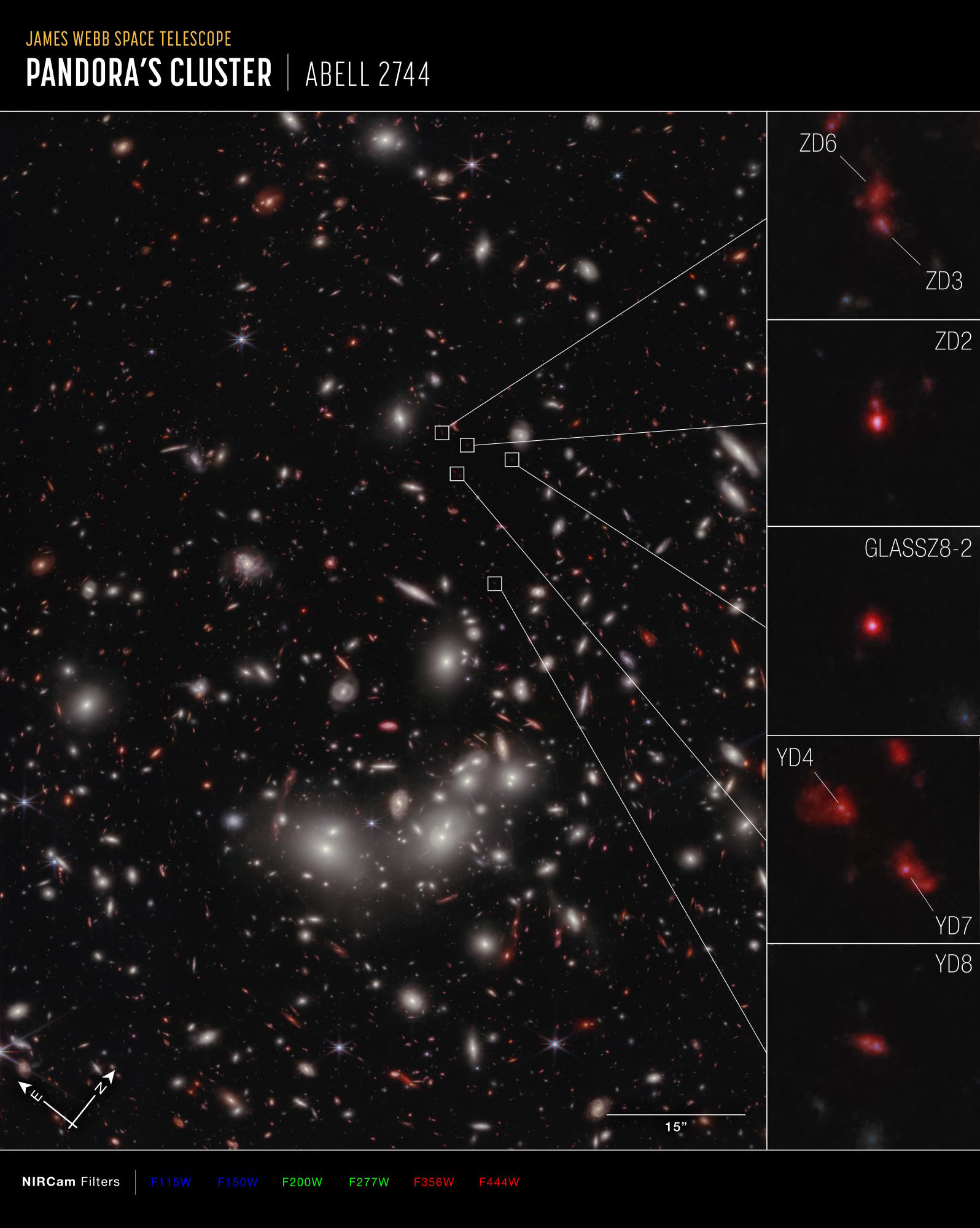
15.) The most distant galaxy cluster ever. Earlier in 2023, scientists spectroscopically analyzed a series of distant, very red, faint, galaxies found in the field-of-view behind Pandora’s cluster: Abell 2744. They found that at least seven of these galaxies are at precisely the same redshift, indicating the presence of a proto-galaxy cluster, the earliest one ever found at just 650 million years after the Big Bang. While Hubble had found the earliest proto-galaxy cluster previously known, at 800 million years after the Big Bang, and the CEERS collaboration found one just 1.2 billion years after the Big Bang, this cluster, with a mouthful of a name of A2744z7p9OD, was discovered by the GLASS collaboration, showcasing the importance of viewing many different areas of the sky in the quest for the most distant classes of objects of all.
These 15 images represent just a tiny fraction of the views and science that have come out of JWST, and the best part is we likely have another 20 years of excellent JWST science to look forward to. The great cosmic story, and our understanding of it, is in many ways only beginning to be unfolded.
